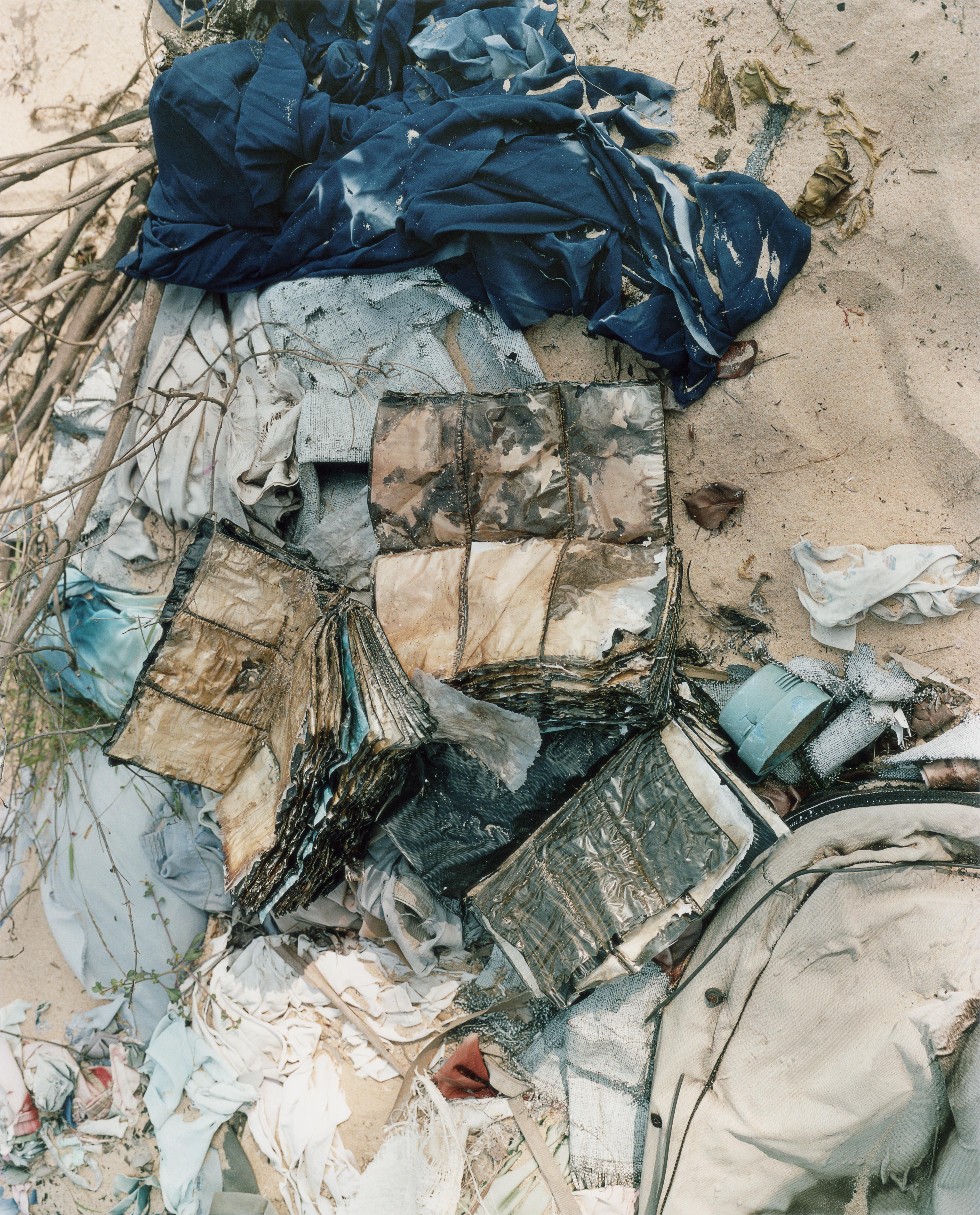Rituals for the Dead on the Seashore: Cassie Machado’s Afterlife
While documenting Mullivaikkal, an area in the Mullaitivu District of the Northern Province of Sri Lanka from 2011–16, Sri Lankan-British photographer Cassie Machado noticed photo albums, mementos and other valuables left on the shore where the final massacre of the Sri Lankan civil war occurred in 2009. The massacre and the last few months of the war led to the deaths of 40,000–70,000 civilians (according to estimates provided by the UN), as government forces emerged victorious over the Liberation Tigers of Tamil Eelam (LTTE). While “peace” was being celebrated with ceremonial rice with milk and other festivities in the prominent Sinhala-majority areas in the south of the country, many in the north buried themselves in added years of mourning on top of the three decades of conflict they had experienced.
Machado’s series Afterlife (2011–16), first exhibited in a solo show at the Saskia Fernando Gallery, has now travelled across the globe—including to the Dhaka Art Summit and MOCA Taipei. The work is a haunting reminder of the deaths and disappearances that occurred throughout the war, purely through remnant belongings as survivor objects. In a series of fourteen photographs titled 9.3120° N, 80.7866° E (2011–16), the artist captures family photo albums assumed to be of civilian families that lost their lives to the massacre. The blackened, damaged edges of each album are highlighted against an off-white, sand-like background similar to the colours of the seashores where the families were killed. The photo albums appear to be displaced and replaced in an artificial, unfamiliar space, and as each print has travelled the world, its vital presence becomes more heightened. The title of the photographs is derived from the GPS coordinates of Mullivaikkal, and as the images find their way back home, they are returned to where they originally belonged. While rituals for each unknown, displaced, dead, and/or disappeared civilian’s “afterlife” would have been the norm according to their cultures, Machado’s photographs portray the absence of such rituals and simultaneously immortalise those that were affected by the massacre through a different "ritual" of photographic documentation. The selection of images from the series contains the haunting of unresolved trauma enacted onto the space, striving for a kind of closure for these unnamed and unmarked atrocities in Sri Lanka’s recent past.
To learn more about Cassie Machado's work, read Pramodha Weerasekera's reflections on the series When Colours Return Home to Light (2024).
To learn more about artists engaging with the Sri Lankan Civil War, read Ankan Kazi’s conversation with Sinthujan Varatharajah on the repressed histories of the Tamil Eelam experience, Abilaschan Balamuraley in conversation with Liz Fernando on post war migration and Pramodha Weerasekera’s review of ’83: A Very Short Film (2016) by Sumudu Athukorala, Sumedha Kelegama and Irushi Tennekoon.
All images from Afterlife (2011–16) by Cassie Machado. Images courtesy of the artist.
Click on the image to view the album





